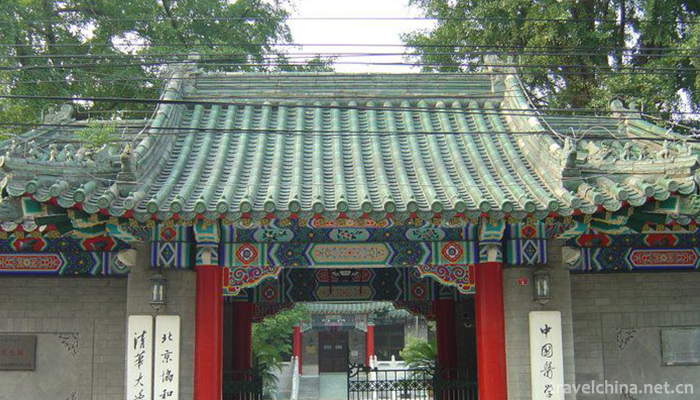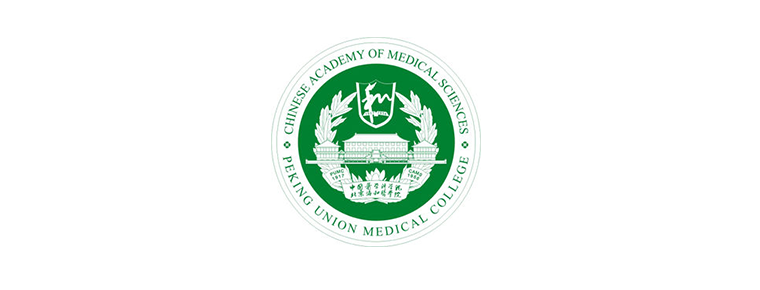Peking Union Medical College
Peking Union Medical College
The Chinese Academy of Medical Sciences was established in 1956. Peking Union Medical College was founded in 1917. Since 1957, the Chinese Academy of Medical Sciences and Peking Union Medical College have implemented a unified management system. As the highest Medical Research Institute and the highest Medical Education Institute in China, since its establishment, colleges and universities have always taken leading the development of medical science and technology education in China and safeguarding people's health as their responsibility, making important contributions to the development of medical and health undertakings in China.
Since the establishment of the university, Peking Union Medical College has initiated the eight-year clinical medical education, higher nursing education, resident training system and the earliest public health practice in China. It has achieved a series of important results, such as "Peking Man Discovery", "Protein Denaturation Theory", "Monomer Ephedrine Extraction" and "Black Fever Research". Academy of Medical Sciences in the development of polio vaccine series and its application in China's children's planned immunization, national control and basic elimination of leprosy, the establishment and promotion of chemotherapies for the eradication of chorioepithelial cancer, comprehensive prevention and treatment of esophageal cancer, clinical treatment system for refractory cardiovascular diseases, butadiene benzene Creative contributions have been made to the creation of natural drugs such as phthalocyanine and bicyclol, the development and industrialization of artificial musk, the discovery of the first AIDS patient in China and the prevention and treatment system of new outbreaks of infectious diseases, the establishment of Chinese medical cytogenetics, the study of disease genes and the clinical application of autologous stem cells. 。 Fifty-two academicians of medical and health circles, including Zhang Xiaoqian, Zhang Xijun, Zhong Huilan, Lin Qiaozhi and Huang Jiaju, were born in the institute. They are the Chinese Center for Disease Control and Prevention, the Academy of Military Medical Sciences, the General Hospital of the People's Liberation Army, the Capital Medical University, Beijing Hospital, the Sino-Japanese Hospital and the Beijing Anzhen Hospital. The establishment of academic institutions provides talents and technical support.
Up to now, the university has developed into a national medical science center and a comprehensive medical science research institute with 18 institutes, 6 hospitals, 7 colleges and 4 out-of-hospital research and development institutions, which integrates medical, teaching, research and production prevention. Colleges and universities have 24 academicians of the two academies, 21 national overseas high-level talent introduction plan, 19 Yangtze River scholars, 39 national outstanding youth; 4 national "double-first-class" construction disciplines; 6 A disciplines in the subject evaluation of the Ministry of Education; 5 national key laboratories, 5 national clinical medicine research centers, and other national levels. There are 8 scientific research bases. There are six hospitals directly under the university, including Peking Union Medical College Hospital of Chinese Academy of Medical Sciences, Fuwai Hospital, Tumor Hospital, Plastic Surgery Hospital, Blood Disease Hospital and Dermatology Hospital. They integrate general hospitals and specialized hospitals, and form a well-known clinical medical system with close integration of medical treatment, teaching and research at home and abroad.
At present, the development of colleges and universities has entered a new century and a new era. In order to implement the important guiding spirit of General Secretary Xi Jinping's "seizing opportunities, facing difficulties and striving to build the Chinese Academy of Medical Sciences as the core base of China's medical science and technology innovation system", the university has formulated the working strategy of "inheriting culture, improving system, innovating mechanism and expanding resources". We have taken the lead in implementing the "4+4" clinical medical education model in China, initiated the "4+2" experimental course for training excellent nursing talents, implemented the Tenure-Track teaching reform, initiated the recruitment of global outstanding talents, and deepened the implementation of the Medical and Health Science and Technology Innovation Project of the Chinese Academy of Medical Sciences. Accelerate the construction of an open national medical science and technology innovation system with research institutes, research bases, key laboratories and innovation units of the National Health Commission/Chinese Academy of Medical Sciences as the main body, and continuously deepen the collaboration with key institutions at home and abroad. Make colleges and universities an advanced ideological source and powerful power source of national medical and health undertakings, especially medical research and education undertakings, and make new and greater contributions to the development of people's health, medical science undertakings and medical education undertakings in China.


-
1.Green Lake Park
Cuihu Park is located at the foot of Luofeng Mountain in Kunming City
Time 2018-10-21 -
2.The Grand View Garden Area of Shanghai
Shanghai Grand View Garden is located at 701 Qingshang Highway, Qingpu District, Shanghai. It is situated on the west side of Dianshan Lake, 65 kilometers away from downtown Shanghai.
Time 2018-12-19 -
3.Yunya Temple Scenic Area
Yunya Temple Scenic Area is a comprehensive scenic area, which is represented by the unique Danxia landform on the Loess Plateau, and is composed of abundant forest resources
Time 2018-12-22 -
4.Tiantai Hot Spring Resort
Tiantai Hot Spring Resort is located in Jimo Hot Spring Town. It has 27 holes of international championship grade Mountain Golf course. It is a large high-end rural resort centre integrating food
Time 2019-02-22 -
5.Taining Meilin Opera
During the reign of Qianjia in Qing Dynasty, after Hui Diao was introduced into Taining through Zhejiang and Jiangxi, it merged with local dialect, folk song minor and Taoist music to form Taining Mei
Time 2019-06-18 -
6.the Wu Ballads
Wuge is the oral literary creation of the majority of the people in Wu dialect area, which originated in southeastern Jiangsu Province, and Suzhou is the central area for the generation and developmen
Time 2019-06-29 -
7.Xuan Paper Making Skills
The production of Xuan Paper, first through a leather production process and a grass production process, and then through more than 100 processes.
Time 2019-07-09 -
8.Bing Xin
Bing Xin (October 5, 1900 - February 28, 1999), female, formerly known as Xie Wanying, Changle, Fujian province (now Changle District, Fuzhou), China Association for democracy promotion ( China Associ
Time 2019-09-06 -
9.Beihang University
Beijing University of Aeronautics and Astronautics is the first Institute of higher learning in Aeronautics and Astronautics founded in New China. It is a university with sacred mission and grand visi
Time 2019-09-06 -
10.University Of Science and Technology Beijing
Beijing University of Science and Technology was established in 1952 by the Department of Mining and Metallurgy of 6 famous universities in China, such as Tianjin University (formerly Beiyang Universi
Time 2019-09-06 -
11.Han Yu
Han Yu (768 - 824 December 25th) retreated. Henan Heyang (now Henan Province Mengzhou People. Claiming to be "Changli," the world is called "Han Changli" and "Mr. Changli"
Time 2019-09-07 -
12.Leshan Education
In 2018, Leshan Normal University, School of engineering and technology of Chengdu University of technology and Leshan vocational and technical college enrolled 16051 students, including 52775 students, 13837 graduates and 2509 full-time teachers.
Time 2020-12-17